
Imagine stepping into a world of lush greenery during the chilly winter months, where vibrant flowers bloom and fresh produce thrives despite the freezing temperatures outside. In this article, we explore the secrets to surviving winter in a greenhouse, uncovering the techniques and strategies that will keep your plants healthy and thriving throughout the cold season. Discover the magic of creating a cozy sanctuary, shielding your precious botanical treasures from the harsh elements, and reaping the rewards of a flourishing oasis, in the heart of winter.
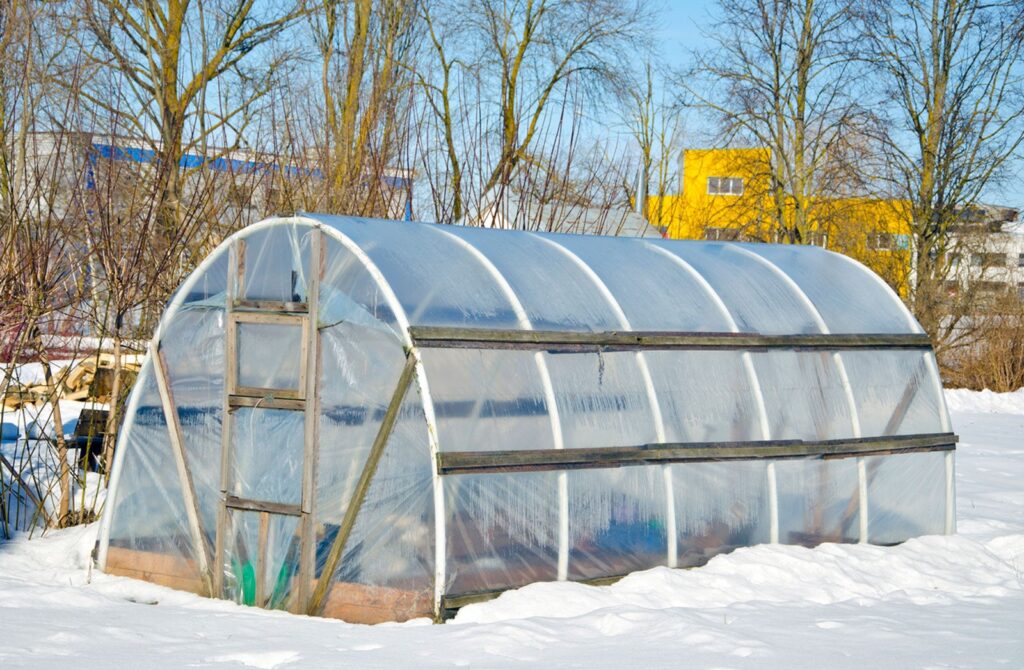
This image is property of www.gardeningknowhow.com.
Choosing the Right Greenhouse Design
When it comes to choosing the right greenhouse design for winter, there are several factors to consider. One of the first things you’ll need to determine is the size and layout of your greenhouse. Consider the available space you have and how much you want to grow. A larger greenhouse will provide more room for plants and allow for better airflow and temperature regulation.
Next, selecting the material and glazing for your greenhouse is crucial. There are various options to choose from, including glass, polycarbonate, and polyethylene. Each material has its advantages and disadvantages, so consider factors like insulation capabilities, cost, and durability.
Insulation options should also be taken into account when choosing the right greenhouse design for winter. Insulation plays a vital role in maintaining a stable temperature and protecting plants from extreme weather conditions. Consider insulation materials such as bubble wrap, rigid foam boards, or double-layered polyethylene film.
Preparing the Greenhouse for Winter
Preparing your greenhouse for winter is essential to ensure the survival and prosperity of your plants. The first step is cleaning and organizing the space. Remove any debris, dead plants, or weeds that may have accumulated during the growing season. This will help prevent the buildup of pests and diseases.
Next, take the time to repair and seal any leaks in your greenhouse. Check for any cracks or gaps in the glazing, as these can lead to heat loss and decreased insulation efficiency. Use weatherstripping, caulking, or specialized repair tapes to fix any areas of concern.
Installing heating systems is another crucial step in preparing your greenhouse for winter. Consider options such as electric or gas-powered heaters, radiant heating systems, or even geothermal heating if feasible. Proper heating will ensure that your plants stay warm and thrive even in the coldest months.
Plant Selection for Winter Greenhouse
Choosing the right plants for your winter greenhouse requires careful consideration. Opt for cold-hardy plants that can endure lower temperatures and more challenging conditions. Some popular choices include kale, Swiss chard, lettuce, spinach, and various herbs like parsley and cilantro. Research the specific cold tolerance and growing requirements of each plant to ensure success.
Understanding the light requirements of your plants is also crucial. Winter days are often shorter and less sunny, so choose plants that can tolerate lower light levels. Leafy greens and herbs generally have lower light requirements compared to fruiting plants. Consider incorporating supplemental lighting if necessary to provide adequate illumination for your plants’ growth.
Planning for succession planting is another essential aspect of plant selection for the winter greenhouse. Succession planting involves staggering the planting of different crops to ensure a continuous harvest throughout the season. This ensures a steady supply of fresh produce and maximizes the use of your greenhouse space.
Temperature and Humidity Management
Proper temperature and humidity management is crucial for the health and well-being of your plants during the winter months. Monitoring equipment and sensors can help you keep track of temperature and humidity levels inside your greenhouse. Place thermometers and hygrometers strategically to ensure accurate readings.
Using thermostats and heaters can help maintain a stable temperature inside your greenhouse. Set the thermostat to the desired temperature range for your plants and ensure that heaters are functioning correctly. Consider using energy-efficient and programmable thermostats to optimize temperature control.
Providing adequate ventilation is equally important in temperature and humidity management. While it may be tempting to seal up the greenhouse tightly during winter to retain heat, proper airflow is crucial. Install ventilation systems, such as fans or vents, to allow fresh air to circulate and prevent the buildup of excess humidity.
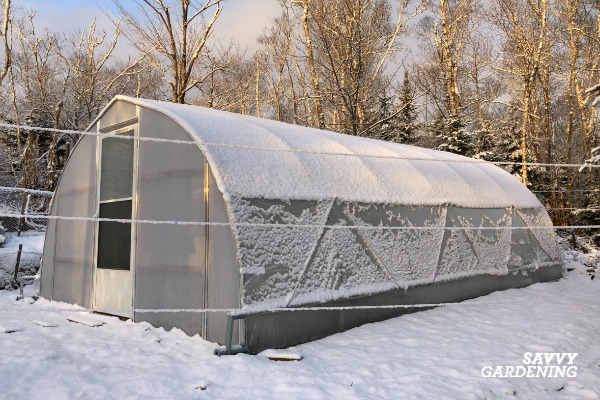
This image is property of i0.wp.com.
Watering and Irrigation Strategies
Adapting watering frequency is essential during the winter months when plants require less water due to slower growth. Monitor the moisture levels of the soil and adjust your watering routine accordingly. Ensure that the soil is moist but not overly saturated to avoid overwatering and root rot.
Incorporating drip irrigation systems can be beneficial in providing controlled and efficient watering for your plants. Drip irrigation delivers water directly to the plants’ roots, minimizing water wastage and reducing the risk of fungal diseases. Consider using a timer to automate your irrigation system and ensure consistent watering.
Fertilization and Nutrient Management
Adjusting fertilizer needs is necessary during the winter months when plants have reduced nutrient requirements. Use a balanced fertilizer with a lower nitrogen content to promote healthy growth without stimulating excess vegetative growth. Slow-release or organic fertilizers can be particularly beneficial during winter.
Composting and incorporating organic matter into the soil is an excellent way to provide long-term nutrient availability for your plants. Compost helps improve soil structure, water-holding capacity, and overall plant health. Consider starting a compost pile or utilizing commercial compost products to enrich the soil in your greenhouse.
Utilizing liquid nutrient solutions, such as hydroponic or aquaponic systems, can be an efficient way to provide essential nutrients directly to your plants’ roots. These systems allow for precise nutrient control and uptake, ensuring that your plants receive the necessary elements for healthy growth.
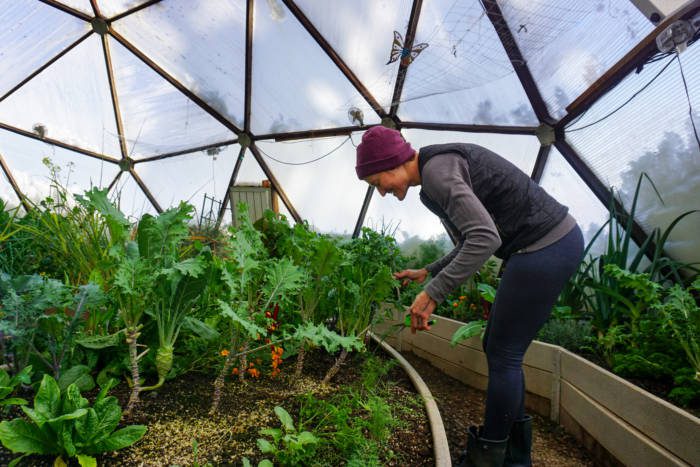
This image is property of growingspaces.com.
Pest and Disease Control
Implementing preventative measures is crucial to keep pests and diseases at bay in your winter greenhouse. Inspect your plants regularly for signs of pests, such as aphids, whiteflies, or spider mites. Use sticky traps or organic pest control methods like neem oil to deter pests from infesting your plants.
Using natural predators and beneficial insects can also help control pests in your greenhouse. Ladybugs, lacewings, and predatory mites are some examples of beneficial insects that feed on pests. Introduce them into your greenhouse to establish a natural balance and minimize the need for chemical pesticides.
Identifying and treating common diseases promptly is essential to prevent further spread and damage to your plants. Familiarize yourself with the signs and symptoms of common greenhouse diseases like powdery mildew or damping-off. Use appropriate organic fungicides or treatments to mitigate the impact of these diseases.
Lighting Options for Winter Greenhouses
Exploring artificial lighting options can be beneficial in supplementing natural light during the winter months. LED grow lights are an energy-efficient and versatile choice, providing the specific light spectrum needed for plant growth. Place the lights strategically to ensure uniform light distribution and avoid shading of plants.
Optimizing natural light can also be done by strategically positioning your plants and using reflective surfaces to maximize light penetration. Clean the greenhouse glazing regularly to prevent dirt and debris from blocking sunlight. Consider using light-reflective materials like aluminum foil or white paint on the greenhouse structure to enhance light reflection.
Understanding photoperiod manipulation is important for certain crops that require specific day-length conditions to initiate flowering or fruiting. By using blackout curtains or supplemental lighting, you can control the duration of light exposure to mimic the desired conditions for your plants.
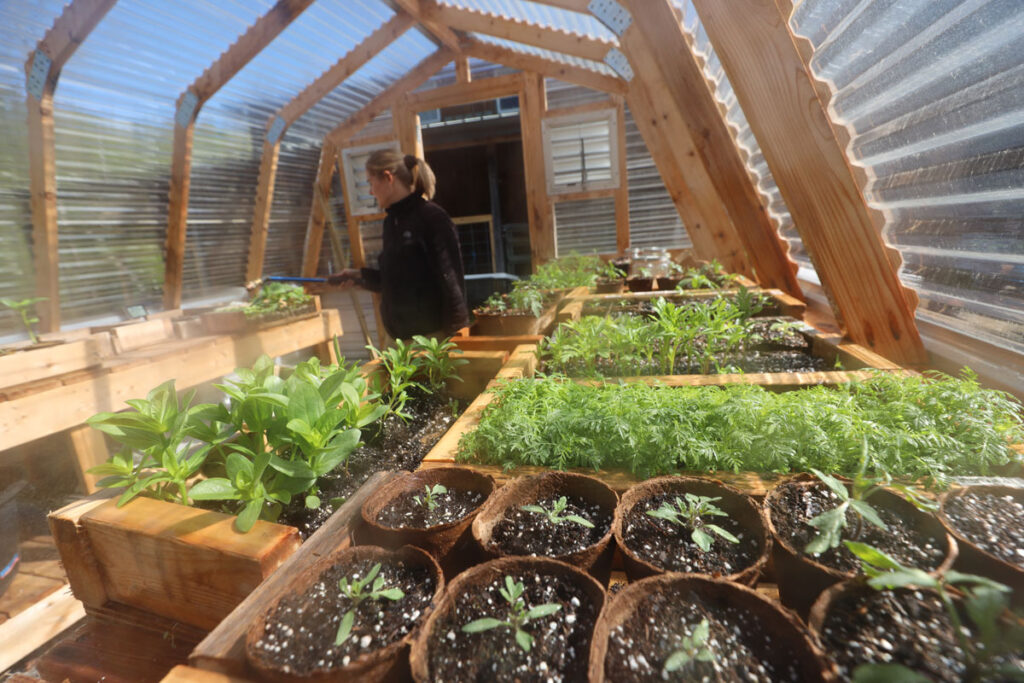
This image is property of abundantpermaculture.com.
Maintaining Proper Air Circulation
Maintaining proper air circulation is crucial to prevent the buildup of dampness, condensation, and mold in your winter greenhouse. Use fans or ventilation systems to ensure adequate airflow throughout the space. This helps regulate temperature, reduces the risk of plant diseases, and prevents the formation of stagnant air pockets.
Avoiding dampness and condensation is important, as excessive moisture can lead to plant stress, fungal growth, and other issues. Ensure that your greenhouse is properly insulated and adequately ventilated to minimize condensation. Use dehumidifiers or absorbent materials like silica gel to control moisture levels if necessary.
Preventing mold and fungal growth can be achieved by practicing good sanitation and airflow management. Keep the greenhouse clean and free of debris that can serve as breeding grounds for mold. Proper ventilation and airflow help reduce humidity levels, which in turn discourages the growth of mold and fungi.
Winter Harvesting and Crop Storage
Harvesting techniques for winter crops require some adjustments compared to the warmer months. Harvest your crops during the sunniest and warmest part of the day to minimize shock to the plants. Avoid harvesting when plants are wet to prevent the spread of diseases and minimize post-harvest spoilage.
Utilizing cold storage solutions is essential for preserving the freshness of your winter harvest. Consider investing in a root cellar, cold frame, or a dedicated refrigeration unit to store your crops at the ideal temperature. Maintain proper ventilation and humidity levels to prevent the growth of mold or spoilage.
Preserving and using fresh produce from your winter greenhouse is a rewarding way to enjoy your harvest throughout the colder months. Consider canning, pickling, freezing, or drying your produce to extend its shelf life. Ensure proper labeling and storage to make the most of your winter bounty.
By following these comprehensive steps and expanding on each section, you can successfully navigate the challenges of winter in a greenhouse. With careful planning, proper preparation, and thoughtful plant selection, your winter greenhouse can provide a thriving haven for plants and a bountiful harvest throughout the coldest months.
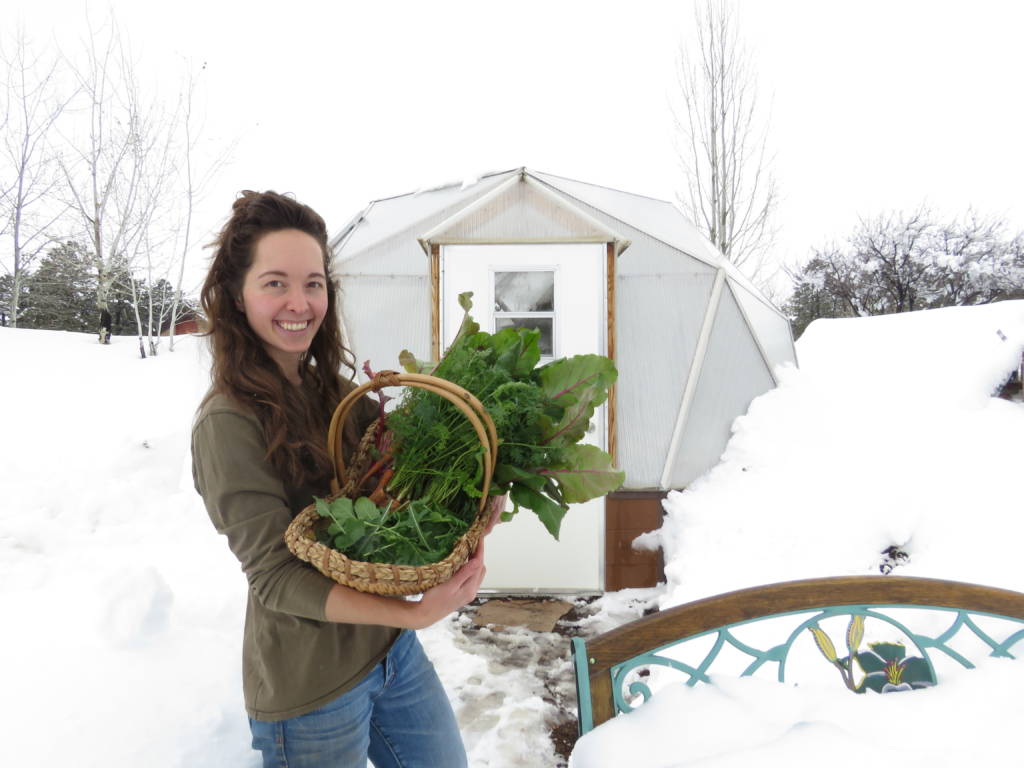
This image is property of b1387267.smushcdn.com.

